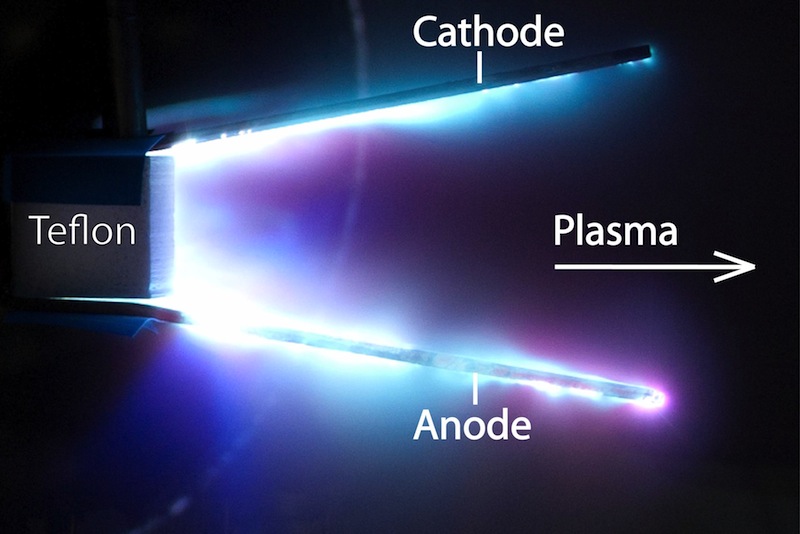Pulsed Plasma Thruster (PPT)
What is a Pulsed Plasma Thruster?
| |
Pulsed Plasma Thruster, often referred to as PPT, are space propulsion systems that are applied on satellites. Unlike chemical propulsion, the energy needed to produce the thrust comes from electric energy. Due to their acceleration mechanism, PPT are categorized as electromagnetic accelerators, and are hence grouped together with, for example, steady-state magnetoplasmadynamic (MPD) thrusters. Thus, PPT are sometimes also called Pulsed MPD Thruster. Coaxial PPT mainly accelerate by electrothermal forces, and are, thus, also called Pulsed Electrothermal Thruster (PET).
Research and development of PPT started already in the 1950s and 60s, and resulted in the successful application of PPT onboard the Soviet satellite Zond-2 in 1964, making them the first electric propulsion system in space! Since then research activities were continued worldwide and some more countries, including Japan, have put a satellite with a PPT into space |
|
|
How does it work?
| |
PPT consist mainly of 4 parts: a capacitor to store the energy, a pair of electrodes to establish the potential, the propellant and the igniter. Depending on the design, PPT are further categorized. Widely used is the nomenclature related to the state of matter of the used propellant:
 APPT (Ablative PPT) or SPPT (Solid Propellant PPT) in case of solid propellant, e.g., the widely used PTFE APPT (Ablative PPT) or SPPT (Solid Propellant PPT) in case of solid propellant, e.g., the widely used PTFE
 LPPT (Liquid Propellant PPT) in case of liquid propellant, e.g., water or methanol LPPT (Liquid Propellant PPT) in case of liquid propellant, e.g., water or methanol
 GPPT (Gaseous Propellant PPT) in case of gaseous propellant, e.g., argon or nitrogen GPPT (Gaseous Propellant PPT) in case of gaseous propellant, e.g., argon or nitrogen
Either way, the propellant is fed in between the electrodes. In case of the isolating PTFE, it can be provided directly, whereas liquid propellants mostly shortcut the system and need to be injected.
Before the operation, the capacitor is charged up to the working energy (typically some Joules). The igniter is triggered and releases a spark containing electrons to close the electric circuit between the electrodes across the propellant. The short-cut yields the main discharge of the oscillating circuit, and a discharge arc is formed. The high current (of up to several kA) results in the ablation, dissociation and ionization of the propellant to a state of plasma. Due to the high current, a strong magnetic field is formed that leads to a Lorentz force that pushes the particles out of the thruster and creates the thrust. Due to the limited energy in the capacitor, the entire discharge time is about 10-20 µs, after which the arc collapses and the thrust production stops. This is the pulsed operation, and the total thrust ability over the discharge time is called impulse bit.

Pulsed Plasma Thruster during discharge |
|
|
Current interests and further information
| |
Our group studies on both SPPT and LPPT, and we're focusing on the improvement of propellant utilization and the concept of advanced propellants for future application in space. We further use plasma diagnostic methods to understand the physics of the discharge and the resulting plasma.
|
|
|

 APPT (Ablative PPT) or SPPT (Solid Propellant PPT) in case of solid propellant, e.g., the widely used PTFE
APPT (Ablative PPT) or SPPT (Solid Propellant PPT) in case of solid propellant, e.g., the widely used PTFE